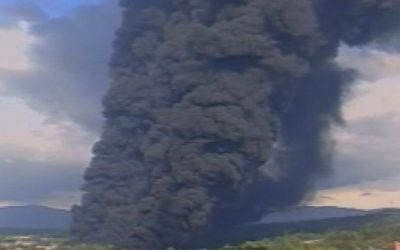ANYONE who has ever fought their property taxes — and thousands of us did in the 1990s assessment fiasco at City of Winnipeg — knows exactly what farmers are up against with the new Water Protection Act.
You’re guilty until proven innocent. And you feel pretty small going up against a big government bureaucracy that doesn’t want to admit it’s wrong.
The Scurfield Inquiry in 1996 finally stated loudly what we in the public knew and the city didn’t want us to find out: The city assessors were not properly trained to assess market value on homes. Between 1990 and 1996, the city paid back $200 million in tax refunds for over-assessments.
Now it’s the farmers’ turn with the new Water Protection Act.
The province recently published maps that break land into four zones for about 120 rural municipalities. They’re available on the Internet at www.gov.mb.ca/waterstewardship/reports/wqmz_2005-07-20.pdf
.
The key zone is Zone 4, coloured in orange. That’s land that can no longer have fertilizer added to grow crops or be used to overwinter livestock, under the new Water Protection Act.
The government hopes this will reduce nutrients, particularly phosphorous, running off into waterways. An imbalance of nutrients in lakes can increase algae growth, resulting in large fish kills when algae decompose and create oxygen vacuums.
The province claims Zone 4 is marginal land more prone to erosion. “Zone 4 is comprised of fragile, sensitive lands that, with some minor exceptions, are not presently under agricultural production,” a senior government official said.
Balderdash, say farmers. Zone 4 comprises 15 per cent of Manitoba farm land. That’s 6,500 square kilometres. You don’t think that is cropped, except for some “minor exceptions?”
The problem is that the government maps are inaccurate, say farmers.
“Those maps were designed a long time ago to figure out the ability of our soils to grow wheat. There’s nothing in them about nutrient run-off,” said Rolf Penner, a Morris-area farmer and agriculture consultant to the Frontier Centre for Policy Research, which has been at the forefront of this issue.
The response from Environment Minister Steve Ashton is that there is a process for farmers to appeal Zone 4 designations.
But if their maps are inaccurate, then it’s the province’s responsibility to fix the problem, not force thousands of farmers to appeal, a process that would drag on for years.
One can see why the province likes the maps. It saves having hundreds of inspectors go out to farm fields to determine nutrient runoff, which would also drag on for years.
However, inaccurate soil zone maps are no more acceptable than inaccurate property assessments.
The province should have known many farmers already test their soils every year for levels of nutrients like nitrogen, phosphorous, potassium sulfur, zinc, and even micronutrients.
Farmers test because applying too much fertilizer is a waste of money because crops don’t use it. It’s the excess nutrients that end up in groundwater and streams.
In most cases, fields are nearly free of fertilizer during spring run-off, the time when most soil nutrients enter waterways. The fertilizer is applied when seeding crops.
That’s why farmers are surprised at being blamed for the phosphorous increase in Lake Winnipeg.
The solution may be for private soil test stations to keep records of nutrients in farm fields deemed to be at risk, and forward results to the province. The province could then monitor nutrient levels. If a field tests too high, the province takes action.
It’s time to scrap the maps. As the act stands now, Zone 4 land could lose over half its value. Farmers estimate value losses of $300-$400 an acre. Cumulative losses could easily be in the hundreds of millions of dollars, and some say could top $1 billion.


